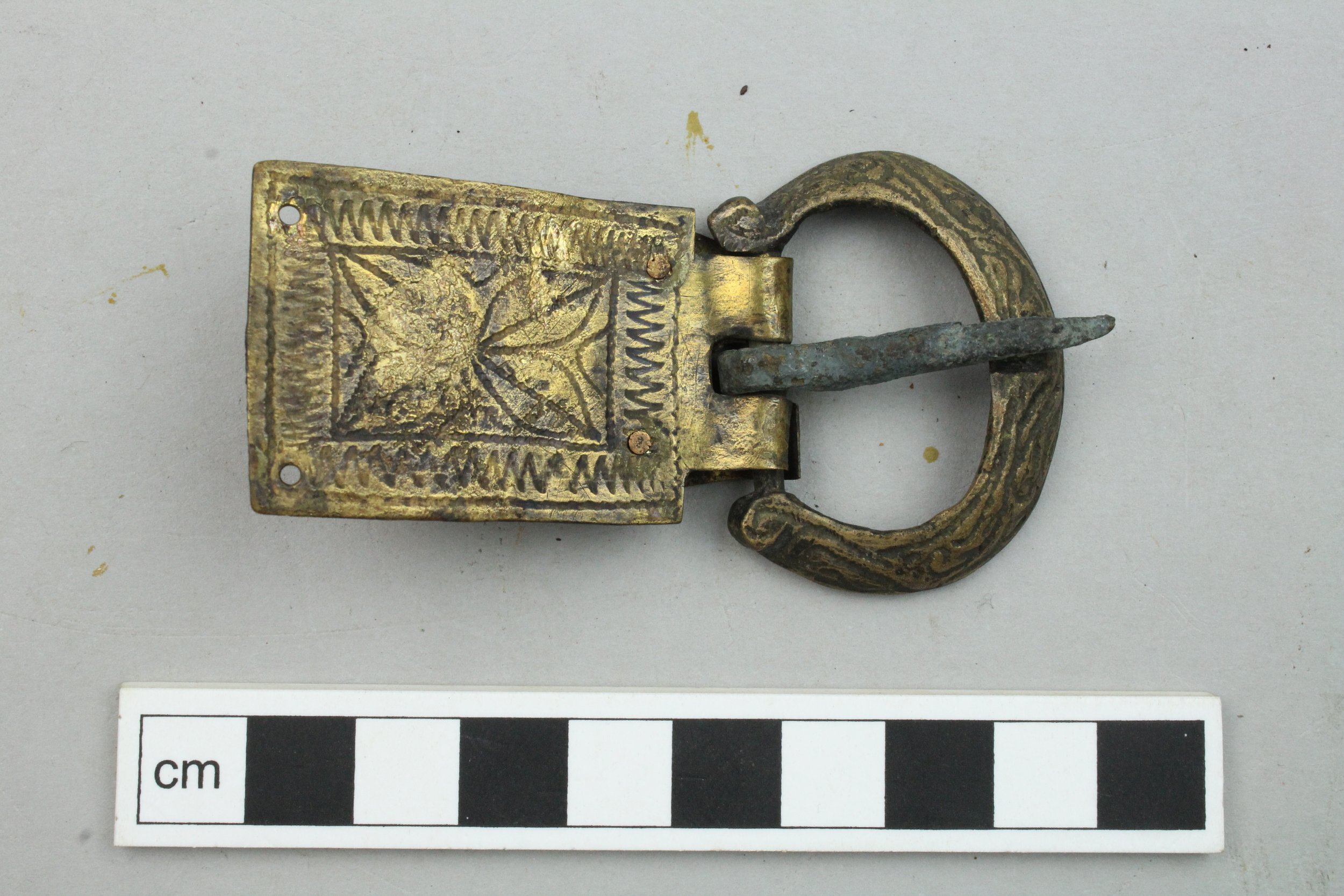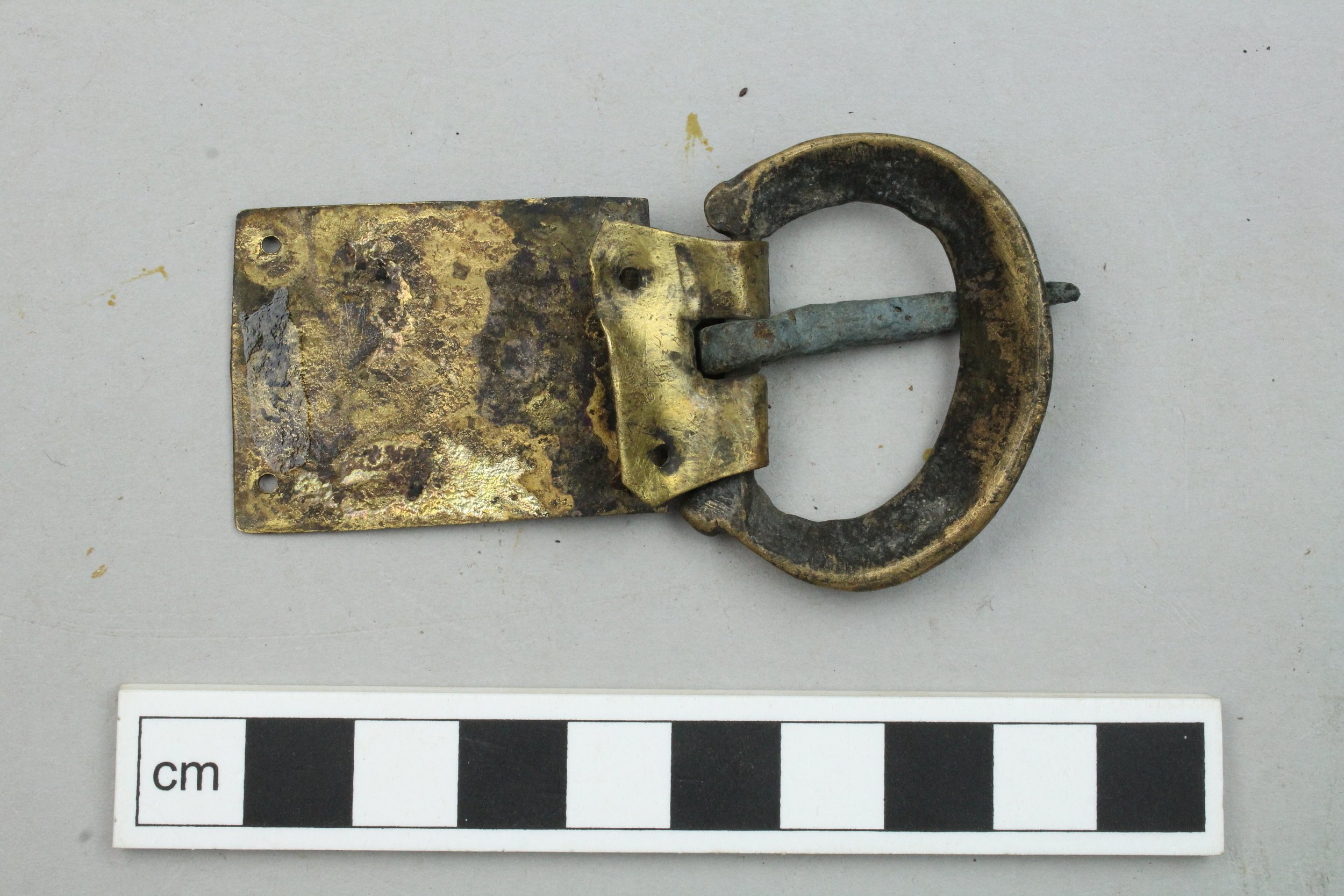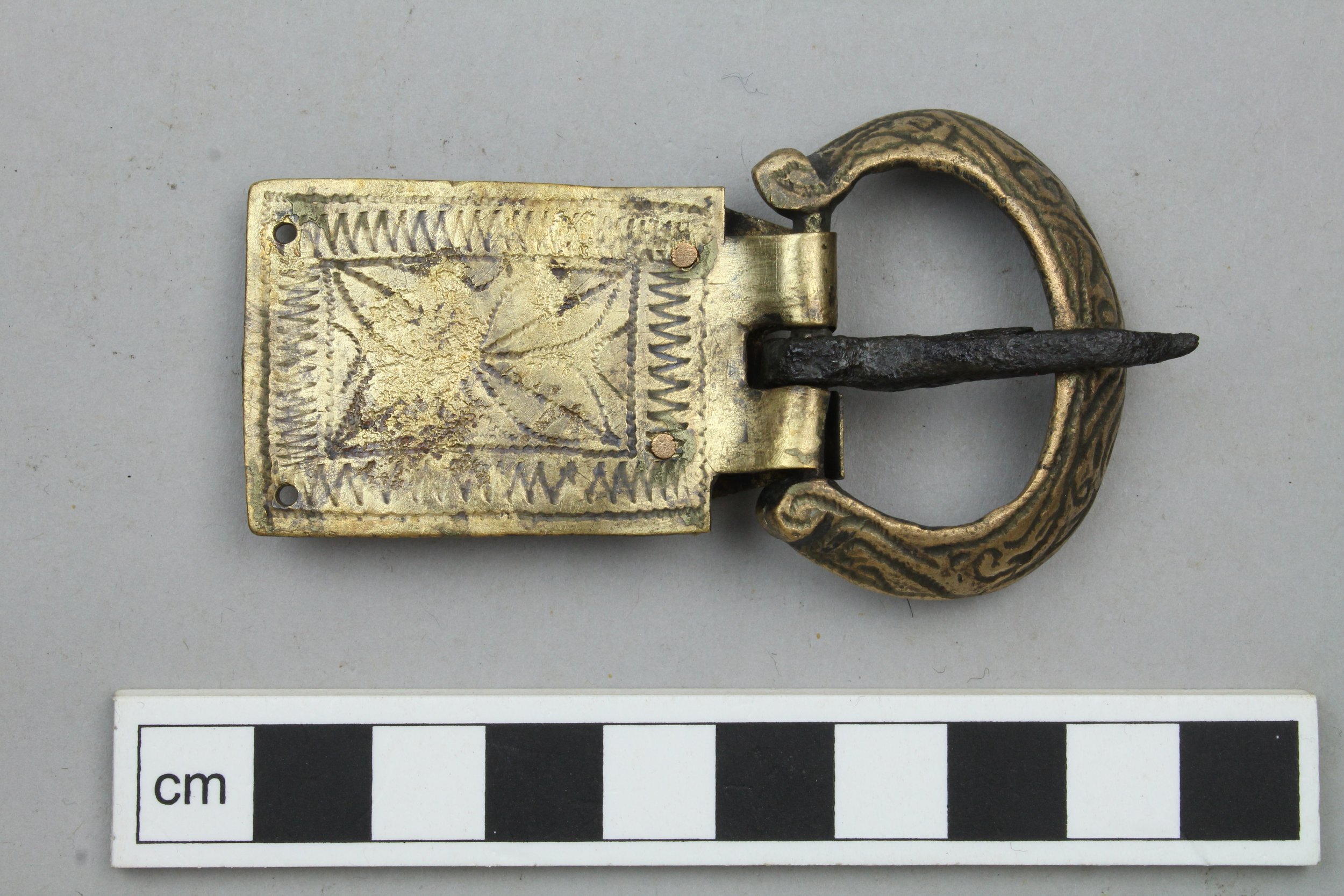Buckle with Plate
Above: Before conservation
While the iron pin on this beautiful copper alloy buckle was beginning to show some signs of deterioration when it arrived in the lab, both the frame and the decorative plate with it’s foliage design were extremely well preserved, and just needed a gentle clean to remove soil deposits and bring back their former shine.
However, cleaning objects is not always as straight forward as it may seem at first sight. It is very easy to overclean an object and unintentionally remove some of the decoration or other important information, such as signs of use or manufacturing methods. Therefore, before starting, the conservator has to determine which parts to clean and how far to take the treatment.
At first glance, the dark colouration in the recesses of the design appeared to be too uniform and consistent to be soiling, so in order to help determine whether this colouring was an intentional part of the decoration, our conservators decided to x-ray the buckle.
Above: X-ray image of buckle
The darker lines in the recesses appeared brighter in the x-ray than the rest of the plate, likely because a different material was used in these areas, indicating that the design was in fact intentional. Removing this part of the decoration would therefore be considered unethical, as it would alter the original appearance of the buckle and would not allow for further study and analysis in the future.
For this reason, our conservators cleaned only the surrounding surfaces using cotton swabs dipped in solvents to remove the soiling. The corrosion on the iron pin was then reduced using small hand tools and the metal pacified using a tannic acid based solution.
This treatment goes to show how important analysis can be when it comes to deciding on treatment options, for without the x-ray image it would have been harder to discern whether this part of the decorative design was intentional or not.
Above: Post conservation





